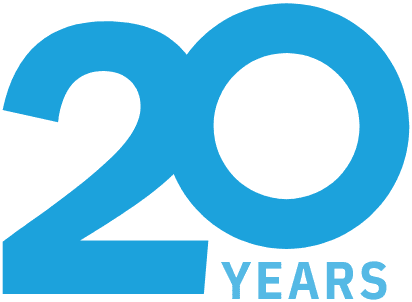Seeking a solution for scanning a large number of documents? Our in-depth guide offers valuable insights into the entire process, covering everything from the best methods and equipment to professional services that can help you digitize your paper archives efficiently and securely. Transform your bulk document challenges into a streamlined digital asset management system.
Key Takeaways
- Bulk document scanning is a systematic process for digitizing large volumes of paperwork, which includes planning, document preparation, and choosing between offsite, onsite, or internal scanning methods based on cost, convenience, and quality considerations.
- Professional scanning services are critical for handling large-scale scanning projects efficiently and securely, with necessary considerations for experience, expertise, and compliance with data protection and privacy regulations.
- Post-scanning strategies emphasize integrating the digital output into existing company infrastructure, securely disposing of physical documents, and leveraging the new digital archive to enhance productivity, enable remote collaboration, and secure data while planning for future scanning and document management needs.
Decoding the Bulk Document Scanning Process

The process starts with collecting documents, typically in a box, which are then scanned to achieve a paperless result. Bulk scanning services, such as those offered by Blue-Pencil, manage the heavy lifting, logistics, and planning according to client instructions. Transitioning to digital formats via bulk scanning helps organizations reclaim office space previously occupied by paper storage, enabling its use for more productive purposes.
Choosing Your Scanning Method
Selecting the right scanning method for your organization is a crucial step in the bulk scanning process. There are different methods to choose from, each with varying expenses and time commitments. For instance, offsite scanning involves transporting your documents to a scanning facility where professionals scan your documents. This method is ideal for large-scale projects.
There are three main methods for document scanning:
- Offsite scanning: You send your documents to a professional scanning service.
- Onsite scanning: Professionals come to your location to scan your documents.
- Internal scanning: You hire someone internally to scan using your office scanner.
Each method has its own advantages and disadvantages. Offsite scanning is convenient and efficient, but you have to send your documents away. Onsite scanning is more convenient, but it may take longer due to the setup process and lack of high-tech scanning equipment. Internal scanning can be cost-effective, but it can be time-consuming and may not yield the same quality results as professional scanning services.
Considering these factors will help you choose the most suitable scanning method for your needs.
Planning Your Bulk Scanning Project
Now that we’ve laid the groundwork, let’s navigate the planning phase. For many companies with a large number of documents to scan, outsourcing to a specialized scanning company is a preferred choice. Why? Because it takes the burden off your shoulders and ensures that your documents are scanned efficiently and accurately, leaving no room for error.
Determining the Scope of Your Project
Before you dive in, it’s important to have a clear understanding of the scope of your scanning project. The first step in this direction is estimating the volume of documents. You can roughly measure document volume based on the storage method, such as using the number of drawers in a file cabinet or the dimensions of banker’s boxes. A common measurement for loose documents is that one inch of paper typically contains around 175 to 200 sheets, which can be used to estimate document volume.
Next, it’s essential to understand your specific project needs as they may require different handling, such as varying levels of indexing, file formats, or image quality. The number and regularity of document retrieval, as well as requirements for quick access, can influence the scope of a scanning project. Furthermore, the type and quality of documents to be captured are factors that affect the scanning project’s scope. Having a clear understanding of these elements will help you find a customizable scanning solution that meets your unique requirements and scales efficiently with your business.
Preparing Your Documents for Scanning
Proper document preparation is a crucial step in the scanning process. Before scanning, documents must be:
Evaluating Experience and Expertise
- Reviewed for any damage
- Staples and paperclips removed
- Creases flattened
- Sticky notes taped down
This thorough preparation is a time-consuming yet critical aspect of bulk scanning to ensure efficient processing and high-quality results. Essential tools like staple removers and rubber finger tips are used to prep documents properly by removing fasteners and assisting in handling documents during the preparation phase.
Damaged documents that cannot be successfully scanned are set aside for review, while scanning providers should repair any damage to other pages before proceeding with scanning. Selecting documents to scan involves deciding between full backfile conversion, partial conversion, day-forward conversion, or scanning on demand. Document preparation for scanning can also include straightening pages, grouping similar-sized documents, and deciding on individual or batch scanning processes.
Selecting the Right Professional Scanning Service
Choosing a professional scanning company is a critical decision that requires careful consideration. The provider should have a strong reputation and long-term experience in handling large-scale document scanning projects within the local community. It’s also crucial that the scanning staff’s qualifications and training levels are well-documented and assessed to ensure a high standard of scanning proficiency.
In addition, to ensure the security of your documents, follow these guidelines:
- Only allow personnel with verified security checks to manage documents.
- Ensure that the scanning facility is equipped with advanced surveillance and secure areas for safe document handling.
- Make sure that the scanning service has clear protocols for the security and handling of sensitive data.
Following these guidelines will help you secure your documents post-scanning.
When selecting a scanning service, it’s important to look for a provider with a proven track record in handling massive volumes of documents. Such a service ensures efficiency and reliability in the scanning process. Scanning services with teams of experts specialized in various document types are crucial as they ensure documents are treated with the utmost care.
Employing a service that adheres to industry standards guarantees that scanned documents meet regulatory compliance and quality expectations. This consideration is especially important for organizations dealing with sensitive information, such as law firms, healthcare institutions, or government agencies.
Understanding Security and Compliance
Security and compliance are crucial considerations in the scanning process. Professional scanning services underscore security by utilizing advanced encryption and secure cloud storage solutions to protect sensitive information. Electronic records management systems enhance data security through tight information management and the implementation of security protocols such as password protection and file encryption.
Furthermore, a clear chain of ownership must be maintained for each document, affirming control and responsibility from receipt by the scanning company until its return or certified destruction. Post-scanning, regulations mandate the consideration of legal retention periods and requirements for authorization before the destruction of physical records can occur. The disposal of physical documents should be carefully documented, specifying criteria, methods, and responsibilities to validate compliance and effectiveness.
The Technical Side of Scanning
The technical side of scanning involves a number of processes and technologies designed to ensure the efficiency and high quality of the scanned documents. Batch scanning, for instance, allows for the scanning of multiple documents or sets of pages in one continuous sequence, enhancing the efficiency of the scanning process.
Document imaging, another important aspect of the technical side, is the conversion of paper documents into digital replicas as part of the capture process. Typically, scanning resolutions of 200 or 300 DPI are used to create clear, legible digital copies of paper documents, including the ability to digitize large format documents. With documents scanned, this ensures that the digital versions are as accurate and easy to read as the original large format paper documents.
Scanning Equipment Explained
Advanced scanning equipment plays a pivotal role in bulk scanning. Some key features of these devices include:
- High-speed scanners for rapid document processing
- Large format scanners for oversized large format documents
- Auto-correction for improved image quality
- Diverse document handling without pre-sorting
- Paper Ejection Control for consistent output quality
These features ensure the quality and consistency of scanned documents, regardless of their size or condition.
Choosing a scanning service with advanced technology and high-quality equipment is critical to assure clear, accurate, and easy-to-read digital documents. The right equipment can make the difference between a successful, efficient scanning project and a time-consuming, costly one.
Software Solutions for Data Extraction
In the world of bulk scanning, software solutions play an essential role in data extraction and indexing. Optical Character Recognition (OCR) technology, for instance, is utilized to convert the text within digitized images into searchable data for efficient information lookup. Automated document classification, another critical software solution, enhances digitization efficiency.
The digitization process encompasses the following steps:
- Scanning paper documents
- Transforming scanned documents into text-searchable files, typically in PDF, TIFF, or JPG formats, facilitated by OCR (Optical Character Recognition)
- Utilizing integrated document processing features such as OCR, batch splitting, and blank page removal to enhance scanned document quality and utility.
Indexing and Organizing Scanned Documents
Once your documents are scanned and digitized, the next step is indexing and organizing them for easy access and retrieval. Accurate document indexing is achieved by assigning tags and metadata to scanned documents, which are based on extracted information like customer names.
Quality control software is used to verify the quality of scanned documents, ensuring they are legible and free of errors. Scanning services include tracking methods for each scanned page, such as barcodes, which link to a digital database and help to ensure proper document management.
Integrating with Existing Infrastructure
With your documents now in digital format, the next step is integrating them with your existing infrastructure. Digital files from bulk scanning can be delivered via physical storage devices, integrated directly into a Document Management System, or stored in cloud storage. Cloud storage offers the advantage of easy access from any location, automated backups for increased data security, the ability to share information rapidly, and enhanced overall security of the stored documents.
Once documents are captured digitally, options for integration include saving to a document management system, emailing to recipients, or utilizing them to kick-start various business processes. Integration solutions enable scanning directly to multiple destinations, such as email, designated folders, or cloud storage, facilitating a seamless incorporation into an organization’s existing document workflows.
Post-Scanning Considerations
After the scanning process, there are a few post-scanning considerations to keep in mind. Adopting digital workflows and minimizing the use of paper can effectively maintain a paperless office. Implementing document management policies for the digital archive helps protect sensitive information and ensures compliance.
Furthermore, the original paper documents can be securely shredded to prevent sensitive information from being accessed after scanning. Professional shredding services offer certificates of destruction as proof that documents have been destroyed in compliance with laws and regulations. Environmentally friendly disposal methods, such as recycling shredded documents, can be considered post secure shredding.
Lastly, electronic documents need to be protected with encryption and access control to ensure data security.
Secure Disposal of Physical Records
Secure disposal of physical records is an important consideration in the scanning process. Shredding of documents is a common and secure disposal method that prevents documents from being reassembled and sensitive information from being compromised. When disposing of physical records, companies must consider legal obligations and sensitivity of information, which might necessitate employing certified shredding services for enhanced data protection.
Aside from shredding, options for handling original documents post-scanning include repacking and returning them to the client or archiving them in remote storage. Post-scanning, organizations can implement an ‘Image-in-lieu’ process, which allows for formal disposal of paper records once the scanned images are verified for accuracy and completeness.
Leveraging Your New Digital Archive
With your new digital archive in place, it’s time to leverage it for your business. Bulk scanning creates a text-searchable database for easy document retrieval, saving employees time and significantly improving productivity. Digital documents facilitate easier collaboration and data sharing for remote teams, providing vital instantaneous access to information necessary for business success.
Transitioning to digital document management with a professional scanning service can lead to substantial long-term cost savings by reducing expenditures on paper records management and associated labor costs. Moreover, digital storage enhances disaster recovery capabilities, enabling easier and more reliable document recovery, especially with backups on various devices.
Implementation and Long-Term Strategies
While the process of bulk scanning and setting up a digital archive is a significant step, it’s just the beginning. The real work lies in its implementation and development of long-term strategies. Clear business outcomes for digital adoption should be set, and data-driven dashboards should be used to track technology adoption aligned with these goals.
Regular review and adjustment of adoption criteria based on actual usage helps ensure expectations are reasonable and gaps in technology adoption are addressed. To optimize the scanning process over the long term, companies should establish recurring scanning work and plan scheduled calls with their scanning provider.
Training and Adoption
Training and adoption are critical aspects of a successful transition to a digital document system. Employees’ main challenges when adopting a new digital document system include tool complexity, insufficient training, and resistance to change. Providing a range of training materials such as live instruction, guides, and videos can accommodate diverse learning styles and workforce demographics.
Ongoing support and the opportunity for continuous learning are critical to ensure employees remain engaged and proficient with the new digital document system. A phased approach to implementing a paperless strategy is necessary to manage the transition smoothly and ensure sustained success.
Planning for Future Scanning Needs
As your business evolves, so will your scanning needs. It’s crucial to plan for future scanning needs by estimating potential document volume and considering how your growth projections will affect document management needs, including the possible need for increased scanning capacity or frequency.
Efficient integration of scanning services can be achieved by:
- Establishing routine schedules and protocols for document digitization which assimilate seamlessly with everyday operations
- Seeking out scalable scanning solutions to accommodate future technological advancements and changing needs
- Maintaining flexibility in scanning infrastructure choices
How Blue-Pencil Can Assist with Your Professional Scanning Project
When embarking on a professional scanning project, Blue-Pencil stands out as a partner that can significantly ease the transition from paper to digital. With years of expertise in document management and scanning services, Blue-Pencil provides a comprehensive solution tailored to your business needs. Here’s how Blue-Pencil can make a difference in your scanning project:
Expertise and Customization
Blue-Pencil’s team of experts understands that each organization has unique requirements. They offer customizable services that adapt to the specific needs of your project, whether it’s a large-scale bulk scanning endeavor or a more focused document digitization task. Their experience ensures that your project is managed efficiently, with attention to detail and a commitment to quality.
State-of-the-Art Technology
Utilizing the latest in high-speed scanning technology, Blue-Pencil can handle documents of all sizes and types, from standard pages to large format documents. Their advanced equipment ensures high-resolution outputs and rapid processing, so your documents are digitized quickly without sacrificing quality.
Security and Compliance
With Blue-Pencil, you can rest assured that your sensitive documents are in safe hands. They prioritize security at every step of the scanning process, from handling to digitization. Blue-Pencil complies with stringent data protection regulations, ensuring that your documents are processed with the utmost confidentiality and care.
Efficient Document Management Post-Scanning
After scanning, Blue-Pencil assists in integrating the digital files into your existing document management systems. They provide solutions for easy access, retrieval, and sharing of your digital documents, enhancing collaboration and productivity within your organization. Additionally, Blue-Pencil’s secure shredding services allow for the safe disposal of your physical documents post-digitization.
Continuous Support and Future Planning
Blue-Pencil’s commitment to your scanning project extends beyond the initial digitization. They offer ongoing support and advice to help you manage your digital documents effectively. As your business grows, Blue-Pencil will be there to assist with future scanning needs, ensuring that your document management scales with your company. Blue-Pencil is not just a service provider but a partner in your journey towards a more efficient, secure, and digital future.
Navigating the world of bulk scanning might seem daunting at first, but with the right knowledge and strategies, it’s an achievable task. From choosing the right scanning methods and equipment to properly prepping documents for scanning, to selecting the right professional scanning service and planning for future scanning needs – every step of the process plays a crucial role in ensuring a successful transition to a digital document system. Remember, the goal is to improve efficiency, secure data, and ultimately, drive business success.


